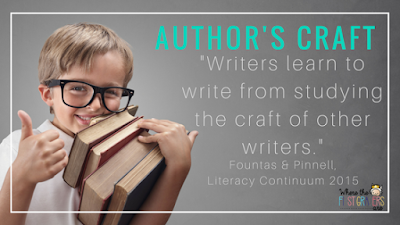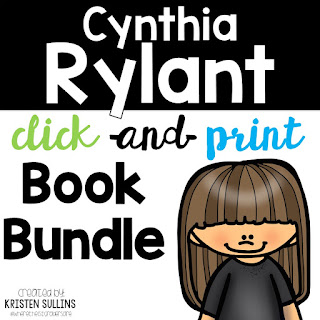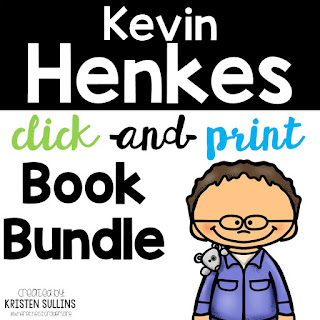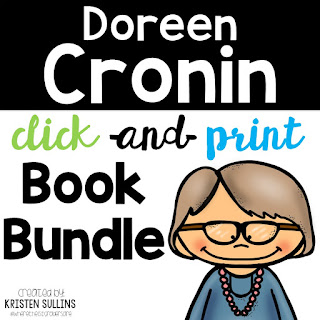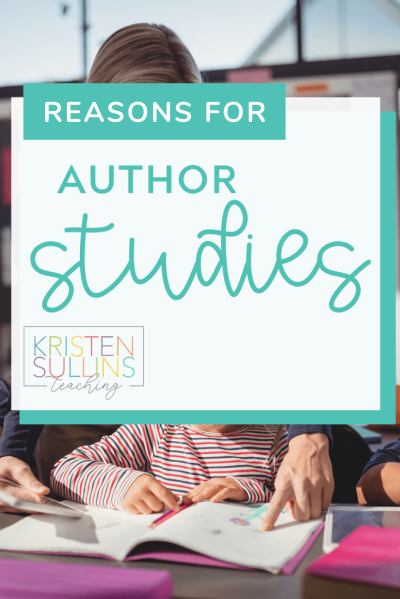
I am currently in the middle of a book study on the Fountas and Pinnell Literacy Continuum and it is affirming some of the practices I use in my classroom.
Here are a few of the things that really stuck out to me:
Now, you could read those quotes in a couple of different ways, but my instinct was to relate them back to author studies. When I first started teaching, I originally thought author studies were all about introducing students to new authors and helping them find book series that they enjoy listening to and reading. I still think that is true, BUT I have found a much deeper and more meaningful way to use author studies….through writing.
When students are exposed to multiple books from the same author they “internalize the syntactic patterns of written language” and “internalize language they will use as they talk and write”. We know that every writer has their own style, even our young writers. By exposure to different syntactic patterns, students are able to develop the style of writing they are most comfortable with.
Author's Craft Examples
Here are a few examples of author's craft that I have found most helpful in first grade:
Cynthia Rylant uses patterns of three.
“Mudge was not a perfect student.
He liked to lie down too much.
He like to sniff the other students.
He liked to think about other things.”
Jan Brett uses detailed illustrations in the borders of her pages to add more to the story.
Kevin Henkes uses mice as his main characters and they usually learn an important lesson. He also likes to use the character's home and school as the setting.
Chrysanthemum learns to love her name.
Sheila Rae the Brave learns to always be brave.
Wemberly learns not to worry.
Owen learns to be brave with only a small piece of his blanket.
Mo Willems relies on speech bubbles or large, bold words and direction lines in most of his stories.
Pigeon screamed, “I WANT A PUPPY!”
Pigeon yelled, “I'm NOT tired!”
Pigeon cried, “That's it!”
Patricia Polacco uses strong words that show how much time as passed.
“the next morning”
“it wasn't long after that”
“that night at dinner”
How to Identify Author's Craft
Students must be able to distinguish the author's style from other books. To do that, I've created book study bundles to help my students comprehend books from different authors. Once students are able to comprehend what I consider the “surface level” of the book, then we dive deeper into trying to imitate the author's craft during our writing time.
Here are a few of my favorite author study bundles:
Help Students Connect to an Author
Check out these previous blog post about how I help my students connect with authors. I think it is so important for students to be able to “meet” their favorite authors and connect their name to a face.


